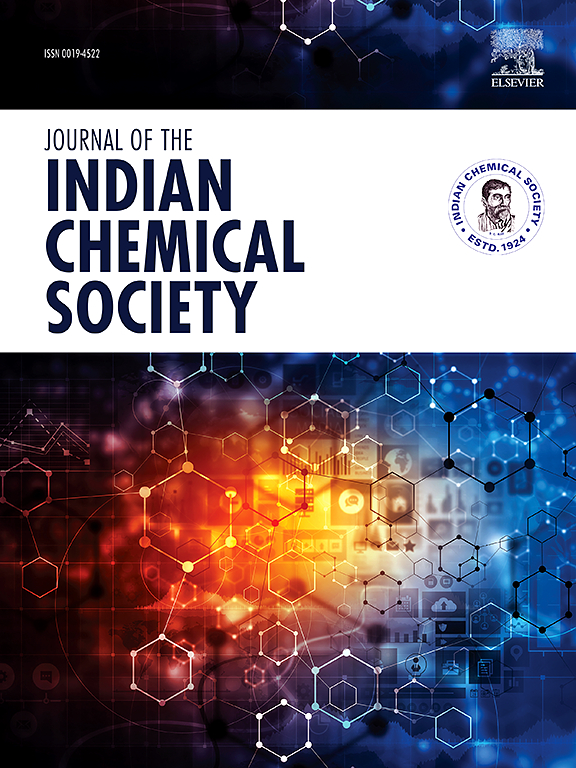Synthesis, characterization and biological evaluation of methyl dithiocarbonate-acenaphthenequinone (MDTCZ-ACQ) schiff base ligand and its coordination complexes with copper, nickel, zinc, and cobalt
IF 3.2
4区 化学
Q2 CHEMISTRY, MULTIDISCIPLINARY
引用次数: 0
Abstract
This study presents the characterization of a novel Schiff base ligand, methyl dithiocarbonate with acenaphthenequinone (MDTCZ-ACQ), and its coordination complexes with copper (Cu), nickel (Ni), zinc (Zn), and cobalt (Co). The ligand and its metal complexes were synthesized and characterized through techniques such as UV–vis spectroscopy, FTIR, and NMR. Structural analysis indicated a tetrahedral geometry for the metal complexes. The electronic spectrum of the ligand showed a characteristic azomethine group absorption around 282 nm, along with a C![]() S stretch at 1148 cm⁻1, and an N–N group at 1045 cm⁻1. The Schiff base ligand exhibited a strong peak at 1603 cm⁻1, attributed to the ν(C
S stretch at 1148 cm⁻1, and an N–N group at 1045 cm⁻1. The Schiff base ligand exhibited a strong peak at 1603 cm⁻1, attributed to the ν(C![]() N) bond, suggesting that the dithiocarbazate acenaphthenequinone moiety acts as a bidentate ligand coordinating through azomethine nitrogen and an oxygen atom. Biological investigations demonstrated that the Schiff base complexes showed enhanced activity against Escherichia coli, with a resistance zone of 19 mm, while the copper and zinc complexes exhibited superior antibacterial efficacy compared to nickel and cobalt complexes.
N) bond, suggesting that the dithiocarbazate acenaphthenequinone moiety acts as a bidentate ligand coordinating through azomethine nitrogen and an oxygen atom. Biological investigations demonstrated that the Schiff base complexes showed enhanced activity against Escherichia coli, with a resistance zone of 19 mm, while the copper and zinc complexes exhibited superior antibacterial efficacy compared to nickel and cobalt complexes.

求助全文
约1分钟内获得全文
求助全文
来源期刊
CiteScore
3.50
自引率
7.70%
发文量
492
审稿时长
3-8 weeks
期刊介绍:
The Journal of the Indian Chemical Society publishes original, fundamental, theorical, experimental research work of highest quality in all areas of chemistry, biochemistry, medicinal chemistry, electrochemistry, agrochemistry, chemical engineering and technology, food chemistry, environmental chemistry, etc.

 求助内容:
求助内容: 应助结果提醒方式:
应助结果提醒方式:


